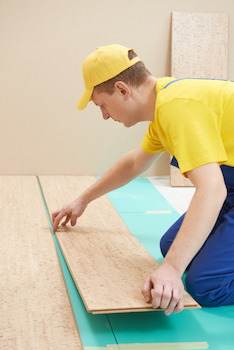Nothing can be as exciting or change a room faster than installing new flooring. And when you’ve made the decision to install hardwood flooring, you know you’ll be investing in a look and feel that will not only look good for years to come, it will also add value to your home overall.
Start by reading our Tips Before Your Hardwood Flooring Installation Process. Then continue here and discover some important facts to take into consideration as the process begins.
During installation:
Make sure your installer is aware of where hardwoods will be laid in your home, and what other flooring it will ultimately bump up against. Different types of transitions will be used depending on your other flooring. Its also important to use the right transition for each situation. For example, a T-molding is used when transitioning from one flooring area to another flooring area at the same height level. A reducer transition is required if your hardwood floors are slightly higher or lower than another hard surface, such as vinyl or tile. This will ensure anyone in your home can easily move between flooring without risk of tripping or injury.
Because hardwood flooring will expand and contract during its life, its important to leave space for this natural occurrence. Expansion gaps must be used when your floors meet the walls to ensure space for normal expansion and contracting. This includes walls, door stops, transitions, poles, or any other area where there is a distinct transition.
With real hardwood flooring, its important to mix up the planks from different boxes. Individual boxes of hardwood usually will have planks with a similar look and feel. By mixing up the boxes and applying the planks in different areas of your room, you will avoid having slight variations as the wood transitions from one side to another. Mixing the planks is an important part of installation for hardwoods, less for laminate flooring. Laminate flooring has a more uniform look, so the variations won’t be as noticeable.
Determine the direction of the planks. For hardwood planks, they must be installed perpendicular to the joints supporting your subflooring underneath. This will make your floors stronger and last longer over time. For laminate flooring, you can choose the direction the planks will be installed. For example, running your laminate flooring long ways across the project area will be easier to install, give you long, clean lines, and provide you with fewer seams to contend with over time. Or try following the flow of light. If sunlight streams through a panel of windows, allow the grain of the wood to flow along those lines. It will help you create a warm look and feel to your room.
Be sure to continue with Tips After Your Hardwood Flooring Installation Process

For all of your Denver Hardwood Flooring needs visit our site today.